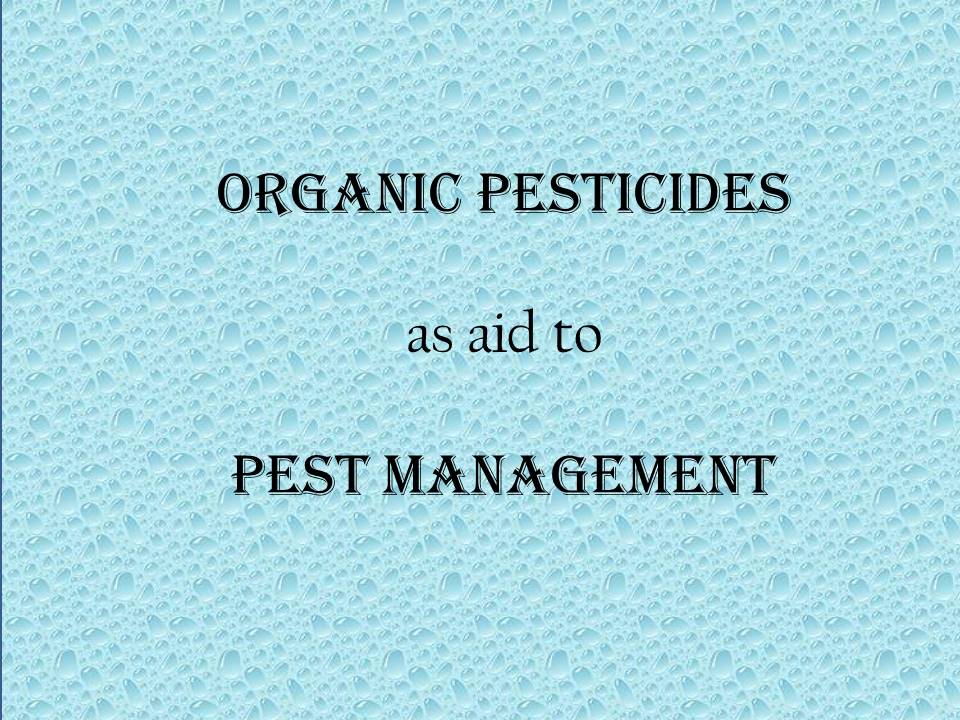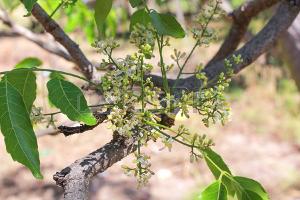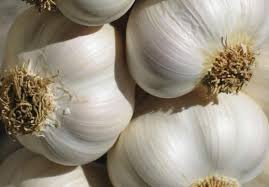USE ORGANIC PESTICIDES PRESERVE ECO SYSTEM
Pests and Pest Management are big issues in the farming activity. Use of Organic Pesticides is a great force multiplier in fighting pests in natural ways. Organic Pesticides are also one of a step in adapting the Integrated Pest Management.
When practicing organic pesticides and fertilizing, we think of preserving our Eco system consisting of the living weeds, plants, bugs and insects, fungi, etc. and their nonliving environs i.e. soil, water, air, minerals, pesticides, etc.
Advantage
Organic Pesticides have the advantages:
- Organic Pesticides unlike inorganic pesticides do not cause toxic run off into the soil.
- The microbial population of the soil is not disturbed.
- Naturally occurring mineral in the soil are not disturbed.
- No soil contamination or soil poisoning is caused by application of organic pesticides.
- No water pollution happens due to the application of organic pesticides.
- Reduces the requirement of heavy applications of inorganic pesticides.
On the other hand, the effective period of organic pesticides is not as long as the inorganic pesticides. In case of severe pest attack inorganic pesticides are the only way to avert total economic loss of the produce.
It is also to be mentioned that that organic pesticides are still pesticides and therefore some danger to friendly bugs and insects would be there. When dealing with pesticides the timing and potency of the application is critical. Farmers all over the world have any number of homemade organic pesticides formulations. And that is why using organic pesticides is so practical and profitable. Organic pesticides can be made with locally available vegetables, roots, soil and other ingredients.
Some of the formulations are discussed below.
Neem spray:
Ingredients Neem oil at 10000 PPM 100 ml, castile soap liquid 10 ml, vegetable oil 10 ml are mixed in a 15 liter capacity hand or motorized sprayer. The foliage spray may be undertaken in the evening. Sprays are effective when plants are not water stressed. This spray is also very useful as a preventive for any pest onslaught. The Neem oil is a very powerful natural insecticide. It is biodegradable and is non-toxic to birds, bees, animals. Neem oil spray is used for a number of pests infestations and also used as a natural fungicide.
Chile Pepper / Diatomaceous Earth:
Grind two handfuls of dry chilies into a fine powder and mix with 2 liters of water. Strain out the chilies. Add 1 cup of Diatomaceous earth and a small amount of castile soap. Let it set overnight. Shake well before applying. Chilies as such may or may not be an insecticide but it is very potent action on the insects. Diatomite is used as an insecticide, among its many uses. Due to its abrasive and physico-sorptive ( tendency of a material to absorb and transmit water and other liquids by capillarity) properties it absorbs lipids from the waxy outer layer of insects’ outer skeletons causing them to dehydrate. It is also helpful to add onion or garlic to this solution.
Garlic spray:
Garlic is used as a non-toxic pesticide. It repels the pest and affects their respiration. To make garlic spray, take 2 whole bulbs (not just 2 cloves) and puree them in a blender or food processor with a small amount of water. Take one liter of water. Mix garlic puree in this water. Let the mixture sit overnight, then strain it into a jar, adding 1/2 cup of vegetable oil, 1 teaspoon of mild liquid soap, and enough water to fill one liter jar. To use this homemade insecticide, use 1 cup of mixture with 1 liter of water and spray liberally on infested plants. Garlic may be used as an inter crop to protect from fruit borers, aphids, moths etc.
Soap and oil Sprays:
Ingredients: one cup of vegetable oil mix with 1 or 2 table spoons of liquid Castile soap. Shake well and let it settle down for some time. For spraying use 2 table spoons of this liquid with 1 liter of water. The spray deposits on the bodies of the pests and affects their respiration.
Castile soap is made from vegetable oils of coconut, olive, and hemp. Like most soaps, which are on the more basic or alkaline side of the pH scale, Castile soap registers at about 8.9 on the pH scale. This is around the same level as baking soda and slightly more alkaline than mild dish soap, although less alkaline than bleach or corrosive tile cleaners.




Leave a Reply